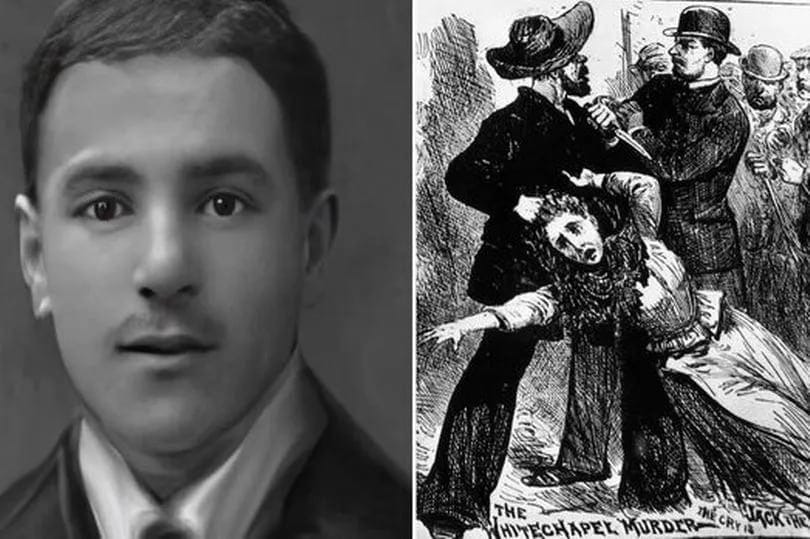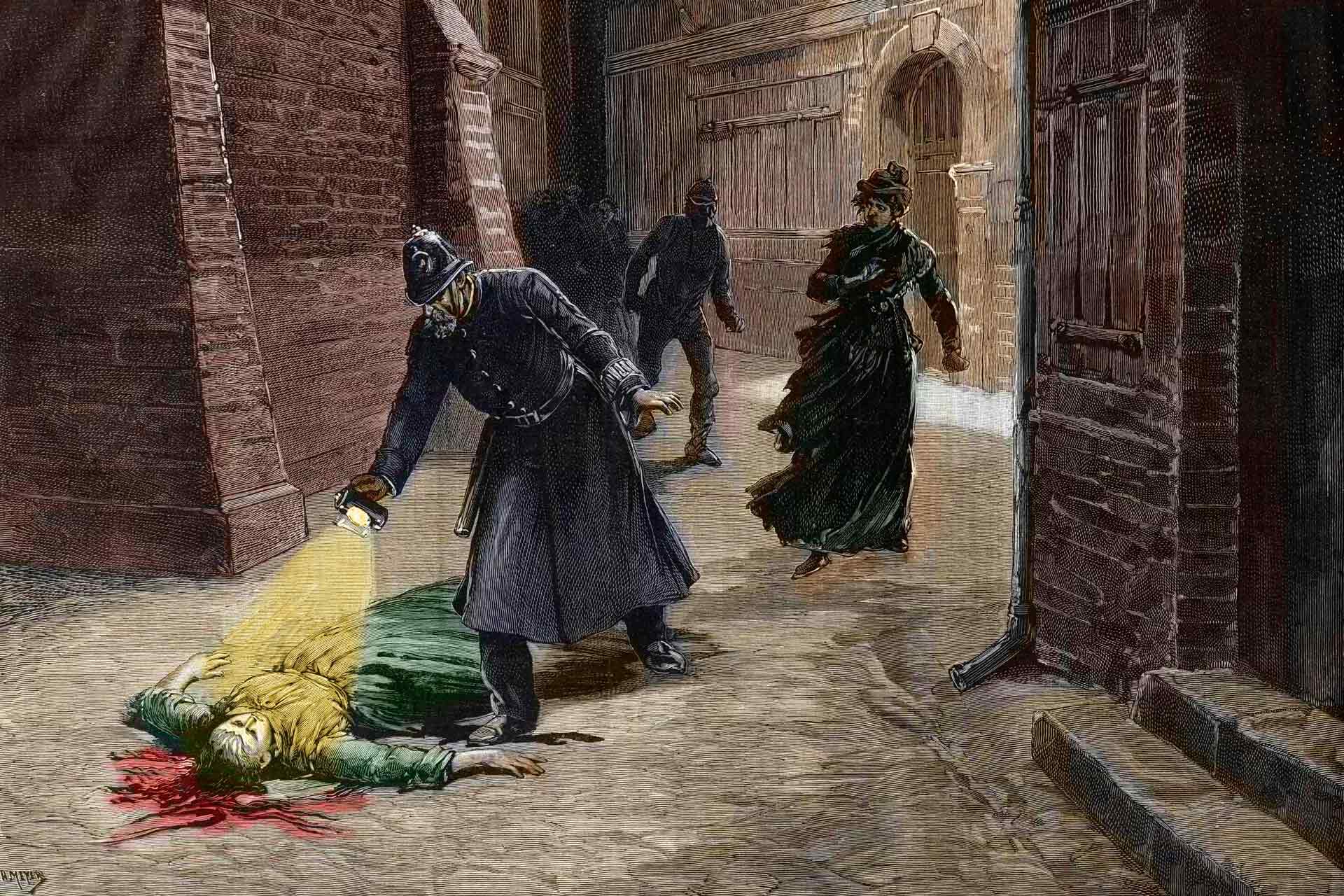Jack the Ripper Unmasked: New DNA Evidence Reveals His Identity
For more than a century, the identity of Jack the Ripper has remained one of history’s greatest mysteries. The infamous serial killer terrorized London’s Whitechapel district in 1888, brutally murdering at least five women before vanishing without a trace. Despite decades of speculation and investigation, his true name has eluded historians, criminologists, and amateur sleuths alike. Theories have ranged from local criminals to members of the British royal family, fueling endless debate and speculation.
Now, a groundbreaking forensic breakthrough has potentially solved the mystery. Modern DNA analysis, extracted from material preserved at the crime scenes, has led researchers to a stunning conclusion. While not an absolute confirmation, the evidence is the strongest yet, potentially rewriting one of history’s most infamous criminal cases and finally unmasking the man behind the legend.

The Infamous Whitechapel Murders
In the autumn of 1888, a series of gruesome murders gripped London’s East End in fear. The killer, later known as Jack the Ripper, targeted women in the impoverished Whitechapel district, leaving behind crime scenes so horrific they shocked both the public and law enforcement. His victims were brutally mutilated, with throats slit and bodies disemboweled, suggesting both a deep-seated rage and, possibly, anatomical knowledge. The violence and precision led some to believe the murderer was a doctor or butcher.
The so-called “Canonical Five”—Mary Ann Nichols, Annie Chapman, Elizabeth Stride, Catherine Eddowes, and Mary Jane Kelly—were killed between August and November 1888. Each murder escalated in brutality, culminating in Kelly’s, whose body was so savagely mutilated that many suspected the Ripper had either reached a breaking point or feared imminent capture. While other Whitechapel murders were investigated, only these five are definitively attributed to Jack the Ripper.
Victorian society was unprepared for such barbarity, and public hysteria quickly spread. Sensationalist newspaper reports stoked fear, and the killer’s notoriety grew after letters—possibly hoaxes—signed “Jack the Ripper” taunted the police. Women in Whitechapel lived in terror, avoiding the streets at night, while law enforcement, under immense pressure, was heavily criticized for its failure to catch the killer.
With each new murder, theories about the Ripper’s identity flourished. Some speculated he was an aristocrat, others a deranged surgeon or foreigner. The lack of forensic techniques made it nearly impossible to collect reliable evidence, allowing him to vanish into history. Over time, the mystery only deepened, inspiring books, films, and endless debate.
Past Investigations and Theories
From the moment the murders occurred, Scotland Yard and the Metropolitan Police faced an uphill battle. The lack of forensic science, combined with the chaotic nature of Whitechapel’s streets, made identifying the killer nearly impossible. Detectives pursued countless leads, interviewed suspects, and even offered rewards for information, but every promising clue led to more dead ends.

Over the years, numerous suspects emerged, each with varying levels of credibility. Aaron Kosminski, a Polish barber, was one of the earliest suspects due to his erratic behavior and proximity to the crime scenes. Another was Prince Albert Victor, grandson of Queen Victoria, though most historians dismiss this as sensationalist fiction. Other names included Montague John Druitt, a barrister who died shortly after the murders, and Dr. Francis Tumblety, a traveling doctor with a known hatred for women.
Despite new forensic tools developed in the 20th century, the case remained unsolved. Psychological profiling and handwriting analysis were applied retrospectively, but no definitive evidence linked any suspect to the crimes. The lack of a verifiable chain of custody for key artifacts further complicated efforts to confirm any theory.
The 2025 DNA Breakthrough: What’s New?
More than a century after the Whitechapel murders, modern forensic science may have finally identified Jack the Ripper. In 2025, researchers applied next-generation sequencing and forensic genealogy to analyze degraded DNA from crime scene artifacts. This breakthrough was made possible through advances in DNA preservation techniques, allowing scientists to extract genetic material once thought lost to time.
The key evidence came from a shawl reportedly found near the body of Catherine Eddowes. While previous studies produced inconclusive results, new forensic methods successfully separated authentic 19th-century genetic material from later contaminants. Kosminski’s oldest brother’s great-great-granddaughter provided a DNA sample that were matched with that of the shawl.
This investigation was led by a team at the University of London’s Genetics Research Institute in collaboration with the Smithsonian Forensic Anthropology Lab. Spearheaded by Dr. Emily Carter, the study employed machine learning algorithms to verify the integrity of the recovered DNA. Unlike past attempts, this research followed strict forensic protocols, minimizing contamination risks and ensuring a transparent chain of custody.
The findings have undergone extensive peer review, with independent forensic specialists confirming the results. While not absolute proof, the genetic link strongly supports a long-standing suspect—suggesting that history may have had the answer all along.

Unmasking the Killer: Who Was Jack the Ripper?
After decades of speculation, the recent forensic investigation has pointed to Aaron Kosminski as the man behind the Whitechapel murders. Kosminski, a Polish immigrant and barber, was already a prime suspect in the original police investigation but was never formally charged. By linking his mitochondrial DNA to genetic material found at the crime scene, scientists have placed Kosminski at the center of the Ripper case with unprecedented certainty.
Kosminski arrived in London in the early 1880s, settling in Whitechapel during a time of deep poverty and social unrest. He was known to have suffered from severe mental illness, exhibiting paranoid delusions and erratic behavior. Historical records indicate that he was committed to an asylum in 1891, where he remained for the rest of his life. Police at the time suspected him of the murders but lacked definitive proof, relying instead on circumstantial evidence and witness testimony. The latest forensic analysis now strengthens the case against him, aligning with suspicions held by investigators more than a century ago.
The DNA findings largely confirm long-held theories about Kosminski’s involvement but also challenge certain narratives. Some historians had dismissed him due to a perceived lack of physical capability, as he was described as mentally unstable and unlikely to carry out such calculated crimes. Others believed the Ripper had medical expertise, given the precision of the mutilations, a trait not associated with Kosminski’s background as a barber. However, forensic experts argue that a steady hand and access to sharp instruments—both characteristics of a barber—could explain the nature of the wounds.
The revelation of Kosminski as the prime suspect does not just solve a mystery—it reshapes the way historians interpret the case. It confirms that the killer was likely a local man, familiar with Whitechapel’s streets, rather than an aristocrat or foreign outsider. While the full details of his motivations may never be known, modern science has brought the world closer than ever to closing the book on Jack the Ripper’s reign of terror.

How Reliable is the DNA Evidence?
The 2025 forensic study linking Aaron Kosminski to the Jack the Ripper murders represents a major breakthrough, but how reliable is the DNA evidence? The research team used next-generation sequencing and forensic genealogy to analyze mitochondrial DNA (mtDNA) found on a shawl allegedly recovered from the scene of Catherine Eddowes’ murder. This method allows scientists to trace maternal ancestry and compare it to modern relatives of Kosminski. While mtDNA cannot provide a 100% match to a single individual, it can significantly narrow the list of possible suspects, making it a compelling piece of forensic evidence.
One of the biggest challenges in using historical DNA is the risk of contamination. The shawl, which has been passed down through multiple owners over the decades, may have been exposed to various environmental factors that could degrade or mix genetic material. Critics argue that without a clear chain of custody, it is difficult to prove that the DNA recovered today is the same as what was present at the crime scene in 1888. Additionally, given the unsanitary conditions of Whitechapel at the time, multiple sources of DNA could have been deposited on the fabric.
Skeptics also question whether Kosminski’s DNA on the shawl is proof of his guilt or simply evidence of his presence. If Kosminski lived or worked near Whitechapel, his genetic material could have ended up on items in the area without him being the killer. Some historians have pointed out that he was never charged with a crime and that the police lacked sufficient evidence against him at the time. While modern forensic technology is far superior to 19th-century investigative methods, it still relies on the assumption that the DNA evidence has not been compromised over time.
Despite these concerns, the forensic techniques used in this study have been widely validated in solving other historical and modern cold cases. The ability to extract viable DNA from aged and degraded samples has led to successful identifications in cases dating back decades. In the case of Jack the Ripper, the findings represent the strongest genetic evidence ever presented, reinforcing long-standing suspicions about Kosminski’s involvement.
Ultimately, while some uncertainty remains, the DNA evidence provides a powerful new perspective on the case. It may not be enough to satisfy every historian or forensic expert, but it significantly strengthens the argument that Kosminski was Jack the Ripper. As forensic technology continues to advance, future studies may either confirm these findings beyond doubt or open new possibilities in the search for the true identity of history’s most notorious serial killer.

The Impact of This Revelation
The possible confirmation of Aaron Kosminski as Jack the Ripper marks a turning point in one of history’s greatest unsolved mysteries. The latest DNA analysis reshapes the narrative, grounding it in forensic science rather than speculation. The idea that the Ripper was a local Polish immigrant rather than an upper-class figure challenges long-held beliefs and forces historians to reconsider the social and economic factors that contributed to the Whitechapel murders.
Reactions from the historical and forensic communities have been mixed. Some Ripperologists—scholars dedicated to studying the case—have welcomed the findings as long-overdue closure, while others remain skeptical. Regardless of individual opinions, the evidence presented represents the most significant breakthrough in Ripperology to date.
Forensic historians view this revelation as a testament to the power of modern science in solving historical cold cases. This success story highlights how DNA analysis, even from degraded samples, can provide answers that eluded investigators for generations. Similar techniques have been used to identify unknown soldiers from past wars, resolve decades-old criminal cases, and even determine the true causes of historical deaths. The Jack the Ripper case now stands as a prime example of how forensic genealogy can bring long-buried secrets to light.
The cultural impact of the discovery is also significant. Jack the Ripper has long been a figure of dark fascination, inspiring countless books, films, and theories. Now, with a likely identity confirmed, the mythology surrounding the case may shift. The gruesome legend of a shadowy, unidentified killer is being replaced by the story of a troubled man whose crimes were horrific but not supernatural. This shift in perspective may alter the way future generations discuss and study the case, moving from mystery-driven speculation to evidence-based historical analysis.
Ultimately, this revelation may encourage further investigations into other unsolved crimes from the past. If forensic science can unmask Jack the Ripper over a century later, what other long-standing mysteries could be solved? The success of this study will likely inspire researchers to apply similar DNA techniques to cases that have remained in historical limbo. As technology continues to advance, more cold cases—both historical and modern—may finally find resolution, proving that science can accomplish what once seemed impossible.
Closing Thoughts
The case of Jack the Ripper has fascinated and haunted the world for over a century, embodying the darkest mysteries of the Victorian era. The confirmation of Aaron Kosminski as the likely killer does not erase the horror of his crimes, but it does bring long-awaited clarity to a case that has fueled endless speculation. For historians, criminologists, and true crime enthusiasts, this discovery marks the resolution of one of history’s greatest murder mysteries, shifting the conversation from guesswork to forensic fact.
Beyond the Ripper case, this breakthrough highlights the power of science in uncovering historical truths. Advances in DNA analysis and forensic technology have allowed modern investigators to solve cases once thought unsolvable. As new methods continue to develop, long-standing mysteries may be reexamined, proving that no crime is ever truly forgotten. While Jack the Ripper’s identity may now be known, his story serves as a reminder that the past, no matter how distant, still holds secrets waiting to be revealed.



